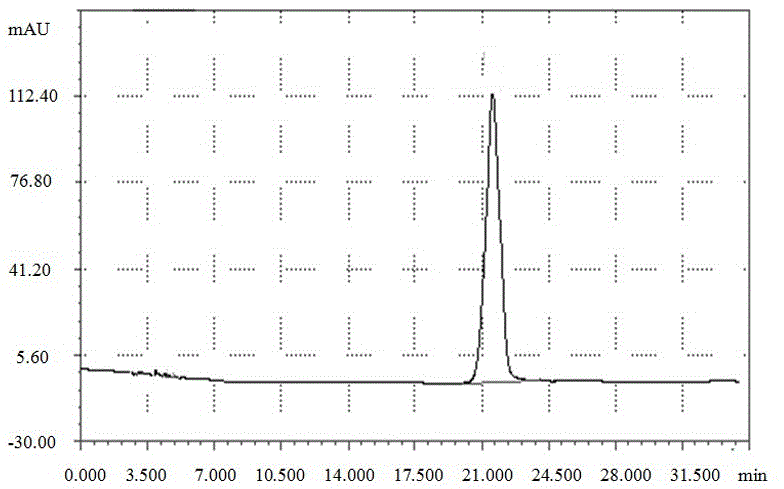Method for preparing cefaclor from enzyme process
A technology for preparing cefaclor and an enzymatic method, which is applied in the field of biomedicine, can solve the problems of unfavorable expansion of production and wide application of cefaclor, high solvent residue and insufficient purity, and achieves the advantages of good crystal shape, uniform crystal and shortened process route. Effect
- Summary
- Abstract
- Description
- Claims
- Application Information
AI Technical Summary
Problems solved by technology
Method used
Image
Examples
Embodiment 1
[0027] A method for enzymatically preparing cefaclor, comprising the steps of:
[0028] (1) Dissolve 40g of 7-amino-3-chloro-cephem acid solid with ammonia water at 18°C to obtain a mother nucleus solution, add D-p-phenylglycine methyl ester hydrochloride solution to the mother nucleus solution to obtain a reaction solution, Among them, the D-p-phenylglycine methyl ester hydrochloride solution contains 41.3 g of D-p-phenylglycine methyl ester hydrochloride, adjust the pH to 6.5, cool down to 15 ° C, add 40 g of immobilized cefaclor synthase, and stir the reaction After 20 minutes, 0.1 g of cefaclor was added as a seed crystal, and after 30 minutes, D-p-phenylglycine methyl ester hydrochloride solution was continuously added dropwise for 2 hours at a rate of 1 mL / min. During the reaction, 7-amino-3-chloro - the residual amount of cephalosporin, and control the pH of the solution in the reaction process with 6mol / L hydrochloric acid and 3mol / L ammonia to be 6.5, and keep the r...
Embodiment 2
[0034] A method for enzymatically preparing cefaclor, comprising the steps of:
[0035] (1) Dissolve 40g of 7-amino-3-chloro-cephem acid solid with ammonia water at 18°C to obtain a mother nucleus solution, add D-p-phenylglycine methyl ester hydrochloride solution to the mother nucleus solution to obtain a reaction solution, Among them, the D-p-phenylglycine methyl ester hydrochloride solution contains 41.3 g of D-p-phenylglycine methyl ester hydrochloride, adjust the pH to 6.5, cool down to 15 ° C, add 40 g of immobilized cefaclor synthase, and stir the reaction After 20 minutes, 0.1 g of cefaclor was added as a seed crystal, and after 30 minutes, D-p-phenylglycine methyl ester hydrochloride solution was continuously added dropwise for 2 hours at a rate of 1 mL / min. During the reaction, 7-amino-3-chloro - the residual amount of cephalosporin, and control the pH of the solution in the reaction process with 6mol / L hydrochloric acid and 3mol / L ammonia to be 6.5, and keep the r...
PUM
 Login to View More
Login to View More Abstract
Description
Claims
Application Information
 Login to View More
Login to View More - R&D
- Intellectual Property
- Life Sciences
- Materials
- Tech Scout
- Unparalleled Data Quality
- Higher Quality Content
- 60% Fewer Hallucinations
Browse by: Latest US Patents, China's latest patents, Technical Efficacy Thesaurus, Application Domain, Technology Topic, Popular Technical Reports.
© 2025 PatSnap. All rights reserved.Legal|Privacy policy|Modern Slavery Act Transparency Statement|Sitemap|About US| Contact US: help@patsnap.com

